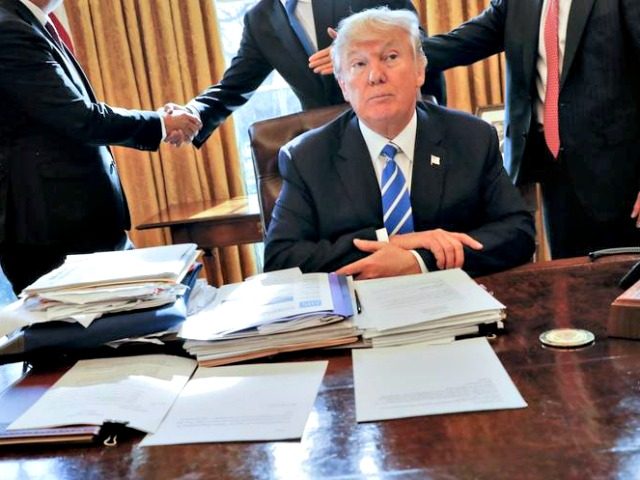The Trump administration is swiftly moving to an embrace of a tax plan that emphasizes rate cuts and economic growth over concerns about the budget deficit.
Treasury Secretary Steven Mnuchin reflected this in answer Monday to a question from the White House press corps. Mnuchin said the administration’s tax plan would focus on a middle-class tax cut, tax simplification, and making U.S. businesses more competitive.
Asked if the plan would be revenue neutral, meaning any reductions in expected revenue from tax cuts would be offset from increases in revenue or spending cuts elesewhere, Mnuchin instead said the plan would “pay for itself” through economic growth.
This is a signal that the administration may be planning to put forth a tax proposal that the Congressional Budget Office would forecast as increasing the deficit. While some Capitol Hill budget hawks reflexively oppose deficit spending, Trump has long been perceived as being more open to debt financed government spending. Many supply-siders believe that tax cuts that produce economic growth can “pay for themselves,” even if official government forecasts don’t reflect that view.
Budget deficits arise when the federal government issues bonds to investors instead of balancing all of its spending with taxes and fees on households and businesses. They can be increased when tax cuts reduce revenue and aren’t offset with spending cuts. They fall when the government increases the amount of money taxed relative to spending, which reduces the share of the budget funded by bond-investors.
Since Treasuries are dollar denominated, there is no risk that the United States government will not be able to repay its debt, as the government can always pay debt issued in the currency it controls. The only risk to the economy that deficits create is higher inflation. Despite several years of historically high deficits, all indicators say that inflation will remain quite low for decades to come.
During a meeting inside the Oval Office last week, President Donald Trump said that he wants massive tax cuts, The Wall Street Journal reported Monday. He ordered them to prepare a plan to slash the corporate tax rate to 15%, prioritizing tax cuts over attempts not to increase the deficit, according to “a person familiar with the directive” who spoke with WSJ.
Top lawmakers are scheduled to meet with Treasury Secretary Mnuchin and National Economic Council Director Gary Cohn on Tuesday to discuss the administration’s tax proposals. Trump plans to make a major announcement on tax policy on Wednesday.

COMMENTS
Please let us know if you're having issues with commenting.